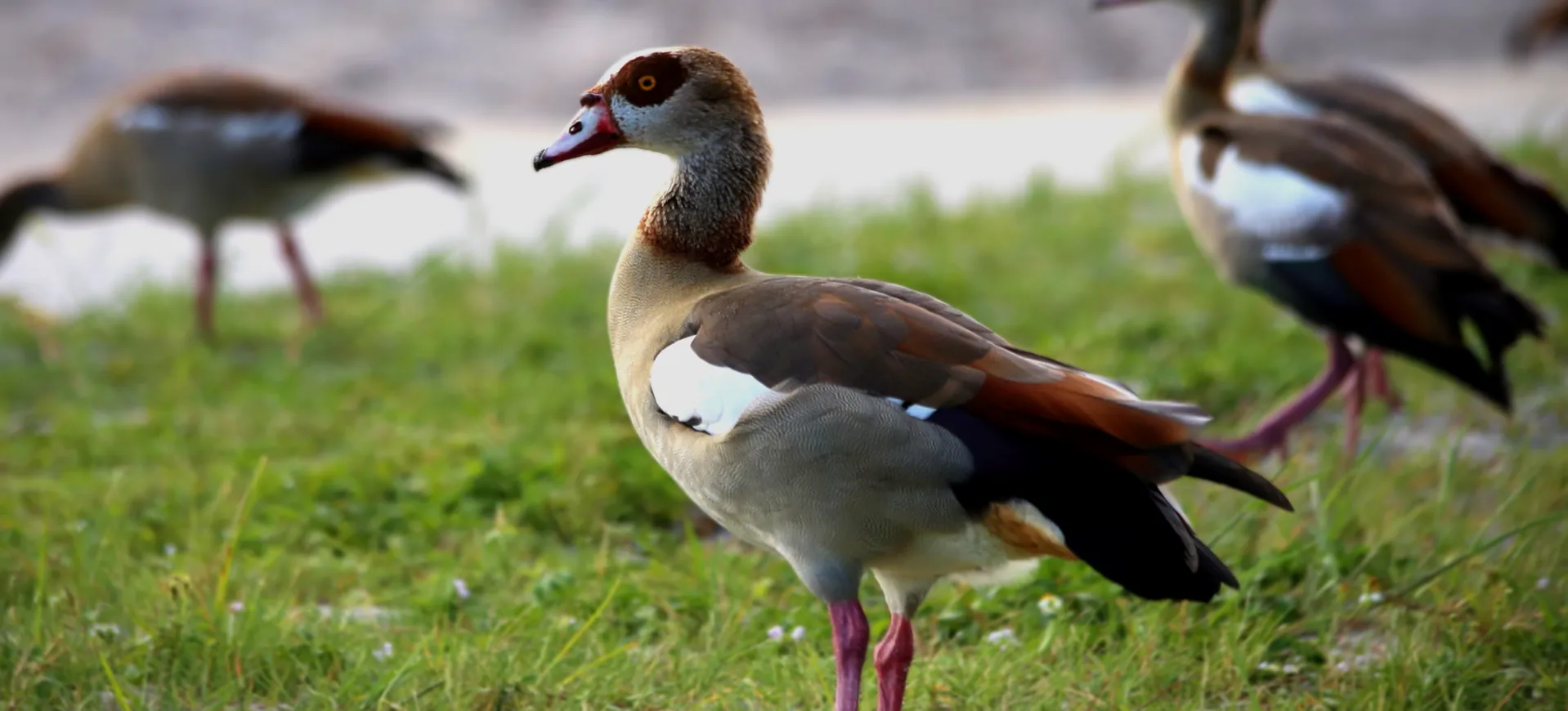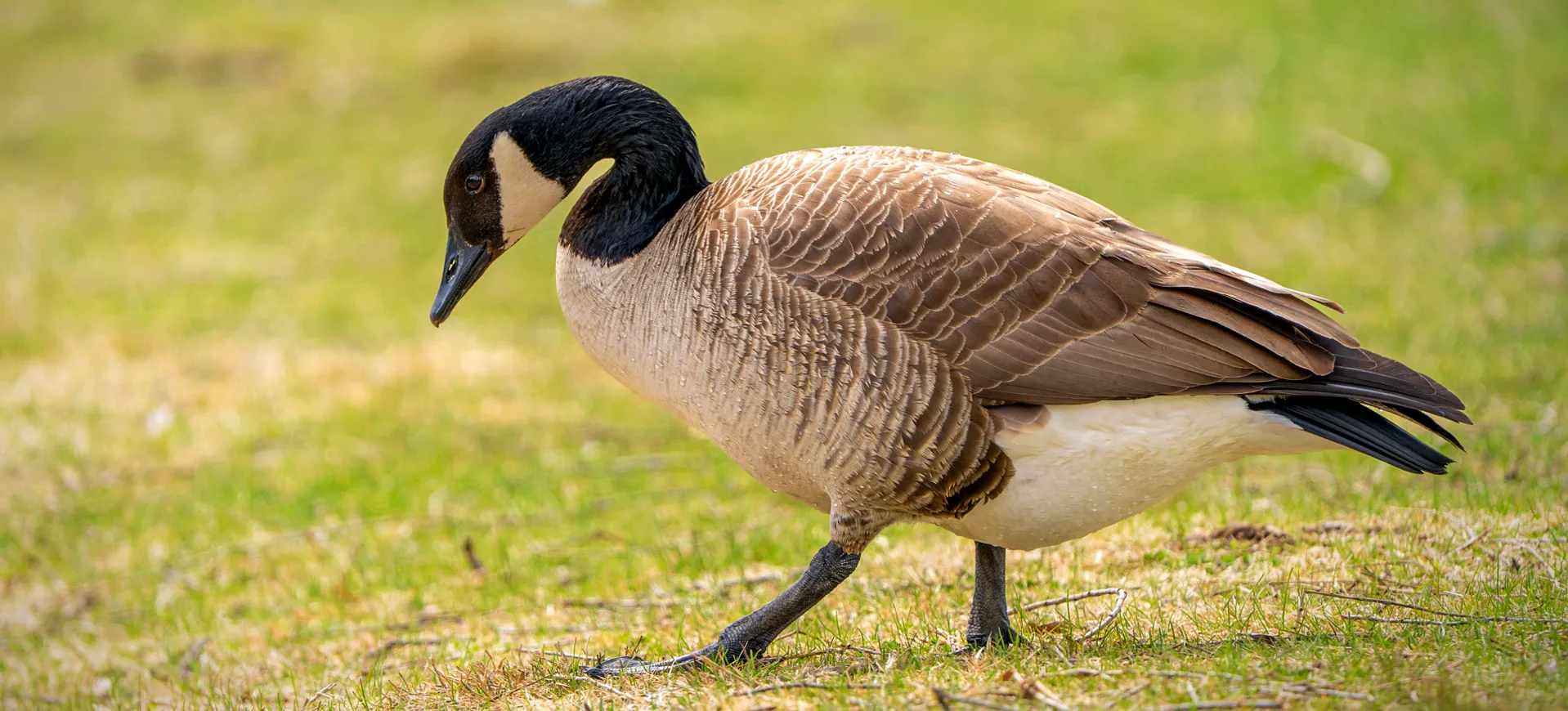Overview
The Red-crested Pochard is a striking waterfowl species known for its distinctive appearance and vibrant colors. Males are particularly notable for their bright red heads, contrasting black breasts, flanks, and gleaming white sides, making them one of the most easily identifiable ducks in breeding plumage. Females and non-breeding males are more subdued in color, with grayish bodies and brown heads, but they still retain the characteristic red eye that distinguishes the species. These ducks are found across parts of Europe and Asia, frequenting lakes, marshes, and slow-moving rivers where they can be seen diving and dabbling for food.
Their diet primarily consists of aquatic plants, seeds, and invertebrates, which they forage for by diving underwater, showcasing their excellent swimming abilities. Red-crested Pochards are migratory birds, with many northern populations moving south to warmer climates during winter. They are social birds, often found in mixed flocks with other waterfowl, where their bright plumage and gregarious nature make them stand out. Despite threats from habitat loss and hunting in some areas, the Red-crested Pochard maintains a stable population in much of its range, thanks to conservation efforts and protected habitats.
The species plays an important role in its ecosystem, serving as both a predator of aquatic organisms and a prey item for larger predators. Their nesting habits, which typically involve laying eggs in dense vegetation near water, contribute to the biodiversity and health of their habitats. Conservation measures, including habitat protection and regulations on hunting, are crucial for ensuring the continued survival of the Red-crested Pochard. Public awareness and appreciation of these vibrant ducks can also aid in their conservation, highlighting the importance of wetland ecosystems for biodiversity.
Taxonomy
Kingdom
Phylum
Class
Order
Family
Genus
Species
Type
Physical Description:
The Red-crested Pochard is a medium-sized diving duck with a distinctive and striking appearance. During the breeding season, males are particularly noticeable for their bright red heads and necks, contrasting sharply with their black breasts and white sides. The bill is large and grey, with a distinctive red base in males, adding to their colorful display. Females and juveniles are more subdued in their coloring, featuring brownish bodies and darker heads, but they also have the characteristic bright red eyes seen in males.
Both sexes have a robust body shape typical of pochards, with a relatively large head and a short tail. Their strong and pointed wings provide powerful flight capabilities necessary for their migratory lifestyle. The legs and feet are set back on the body, aiding their diving ability but making them somewhat awkward on land. The sexual dimorphism in plumage becomes most evident during the breeding season when males display their most vibrant colors to attract mates.

Lifespan: Wild: ~5 Years || Captivity: ~10 Years

Weight: Male: 2.2-3.1 lbs (1-1.4 kg) || Female: 1.8-2.6 lbs (0.8-1.2 kg)

Length: Male & Female: 18-23 inches (45-58 cm)

Wingspan: Male & Female: 29-33 inches (74-84 cm)

Top Speed: 54 mph (86.9 km/h)
Characteristic:
Native Habitat:
The Red-crested Pochard is native to a wide range across Europe and Asia, favoring wetlands with extensive open water surrounded by dense vegetation. They are commonly found in freshwater lakes, marshes, and slow-moving rivers, where there is an abundance of aquatic vegetation and invertebrates to feed on. These habitats also provide important nesting sites, typically in dense reeds or bushes near the water’s edge.
The species’ preference for warm, shallow waters makes them particularly vulnerable to habitat loss due to drainage, pollution, and the encroachment of human development. Protected areas and nature reserves play a critical role in conserving the Red-crested Pochard, offering safe havens that support healthy populations.
Climate Zones:
Biomes:
WWF Biomes:
Biogeographical Realms:
Countries:
Diet:
Diet & Feeding Habits:
Red-crested Pochards have a varied diet, including aquatic plants, seeds, and small animals such as invertebrates. They are adept at dabbling and diving for food, often submerging completely to reach underwater vegetation. Their large, powerful bills are well-suited to grasping and tearing plant material and filtering mud and water for small prey.
These ducks are known to feed in groups, sometimes forming large flocks in rich feeding areas, where they can take advantage of the safety numbers provided by predators. Seasonal changes in diet reflect the availability of different food sources, with a higher intake of animal matter during the breeding season to meet the increased nutritional demands. Conservation of wetland habitats is essential for ensuring the availability of diverse food sources for the Red-crested Pochard.
Mating Behavior:
Mating Description:
Red-crested Pochards form monogamous pairs during the breeding season, engaging in elaborate courtship displays that include vocalizations and physical posturing to attract mates. Nesting usually occurs in dense vegetation near water, where the female constructs a well-concealed nest from reeds, grasses, and down feathers. The choice of nesting site is critical for protecting the eggs and young chicks from predators.
The female lays a clutch of 6-12 eggs, which she incubates for about 26-28 days while the male guards the territory. After hatching, the chicks are precocial and able to leave the nest within a day, although they remain under the care of the female for several weeks until they can fly. The breeding success of Red-crested Pochards is closely linked to the availability of suitable nesting sites and the quality of the surrounding habitat, underscoring the importance of wetland conservation.
Reproduction Season:
Birth Type:
Pregnancy Duration:
Female Name:
Male Name:
Baby Name:
Social Structure Description:
Red-crested Pochards are social birds, often forming large flocks outside the breeding season. These flocks can include individuals of their species and other waterfowl, highlighting their ability to coexist with other birds. Social interactions within flocks include feeding, preening, and resting together, which helps to reduce the risk of predation and increases the efficiency of finding food.
During the breeding season, pairs become more territorial, defending their nesting sites from intruders. The social dynamics of Red-crested Pochards are influenced by the seasonal availability of resources and the need for suitable breeding and feeding areas. Understanding these social behaviors is important for managing habitats and ensuring species conservation.
Groups:
Conservation Status:
Population Trend:
The Red-crested Pochard is currently listed as Least Concern by the IUCN, indicating a relatively stable population across its broad range. However, certain local populations may decline due to habitat loss, pollution, and hunting pressures. The species benefits from several protected areas across its range, which provide critical habitats for breeding, feeding, and migration.
Conservation efforts focused on preserving and restoring wetland habitats are key to ensuring the long-term survival of the Red-crested Pochard. These efforts include regulating water levels, controlling pollution, and managing vegetation to maintain the diverse ecosystems that these ducks depend on. Public education and conservation initiatives can also help mitigate threats to the Red-crested Pochard and other wetland species.
Population Threats:
The main threats to the Red-crested Pochard include habitat loss due to drainage of wetlands for agriculture and urban development, pollution of water bodies, and disturbance from recreational activities. Hunting is also a concern in some areas for sport and subsistence. Climate change poses an additional threat, potentially altering the distribution and quality of their wetland habitats.
Efforts to mitigate these threats include habitat protection and management, legal protections against hunting, and initiatives to clean and restore polluted waterways. Conservation strategies must address these challenges comprehensively to ensure the Red-crested Pochard continues to thrive in its natural habitats.
Conservation Efforts:
Conservation initiatives for the Red-crested Pochard include the designation of protected areas, habitat restoration projects, and regulations on hunting. International agreements, such as the Ramsar Convention on Wetlands, play a crucial role in the global effort to conserve wetland habitats and the species that depend on them. Research and monitoring programs are essential for understanding the species’ ecology, population trends, and the effectiveness of conservation measures.
Engaging local communities in conservation efforts is also vital, as it fosters a sense of stewardship for natural resources and promotes sustainable practices that benefit both people and wildlife. Continued commitment to wetland conservation and international cooperation is key to ensuring a secure future for the Red-crested Pochard and the rich biodiversity of wetland ecosystems.
Additional Resources:
Fun Facts
- The Red-crested Pochard is known for its ability to dive up to 30 feet (9 meters) in search of food.
- They are among the brightest-colored pochard species, especially the males during the breeding season.
- The species has a wide vocal range, including whistles and grunts, used for communication within flocks.
- Red-crested Pochards have been observed using their wings to “paddle” underwater while diving.
- They can long-distance migrations, crossing vast stretches of land and sea to reach their wintering grounds.
- The bright red crest of the male is not just for show; it plays a crucial role in attracting a mate.
- Despite their preference for water, Red-crested Pochards can be quite agile on land when necessary.
- Conservation efforts for the Red-crested Pochard benefit many other species that share their wetland habitats.
- Their unique adaptation allows them to change their buoyancy, making it easier to dive for food.
- The Red-crested Pochard’s nesting strategy, involving dense cover near water, helps to protect their eggs and chicks from predators.

















































































